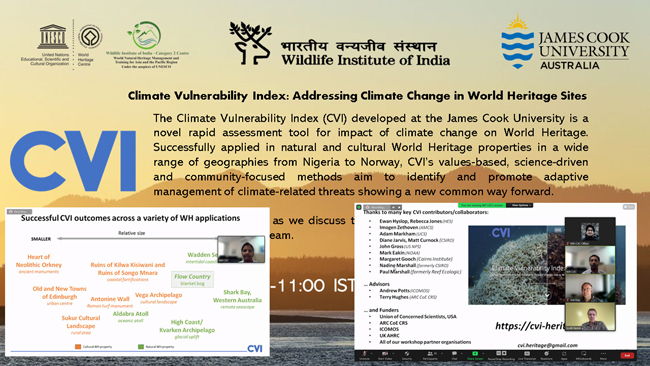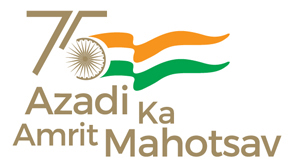WII-C2C in collaboration with James Cook University organized a webinar on “Climate Vulnerability Index: Addressing Climate Change in World Heritage Sites”

An online quiz on Asia-Pacific's magnificent Natural World Heritage at: https://bit.ly/nh-quiz-2022 by WII-C2C and World Heritage Centre. E-certificates for all participants. #ibd2022 #naturalheritage #wiic2c #whc #worldheritage
On Friday, 20th May 2022, WII-C2C in collaboration with James Cook University organized a webinar on “Climate Vulnerability Index: Addressing Climate Change in World Heritage Sites”.
The Climate Vulnerability Index (CVI) developed at the James Cook University is a novel rapid assessment tool for potential impact of climate change on World Heritage Sites. Successfully applied in natural and cultural World Heritage properties in a wide range of geographies from Nigeria to Norway, CVI’s values-based, science-driven, and community-focused methods aim to identify and promote adaptive management of climate-related threats showing a new common way forward.
The webinar was initiated by Dr. Gautam Talukdar, Faculty In-Charge, WII-C2C who introduced the speaker who was here in person at WII-C2C, Ms Taruna Venkatachalam (Research Assistant for the CVI) of James Cook University (JCU), Australia and fellow panelists, Mr. Scott Heron (Associate Professor, JCU) & Dr. Jon Day, developers of the CVI who joined remotely from JCU Australia.
In her presentation, Ms. Venkatachalam took the audience through the CVI stages from values assessment to community focus to the risk-matrix approach. She also clarified on the strengths and limitations of the CVI process mentioning refinements made as the CVI process was applied to a number of World Heritage sites – cultural, mixed, and natural over a period of time. When the floor was opened for audience questions, topics like policy impacts, applicability to non-World Heritage sites and elements of subjectivity in the CVI process were covered. About 35 participants joined in the webinar including attendees from Mexico and Australia.
Last Updated: May 22, 2022









